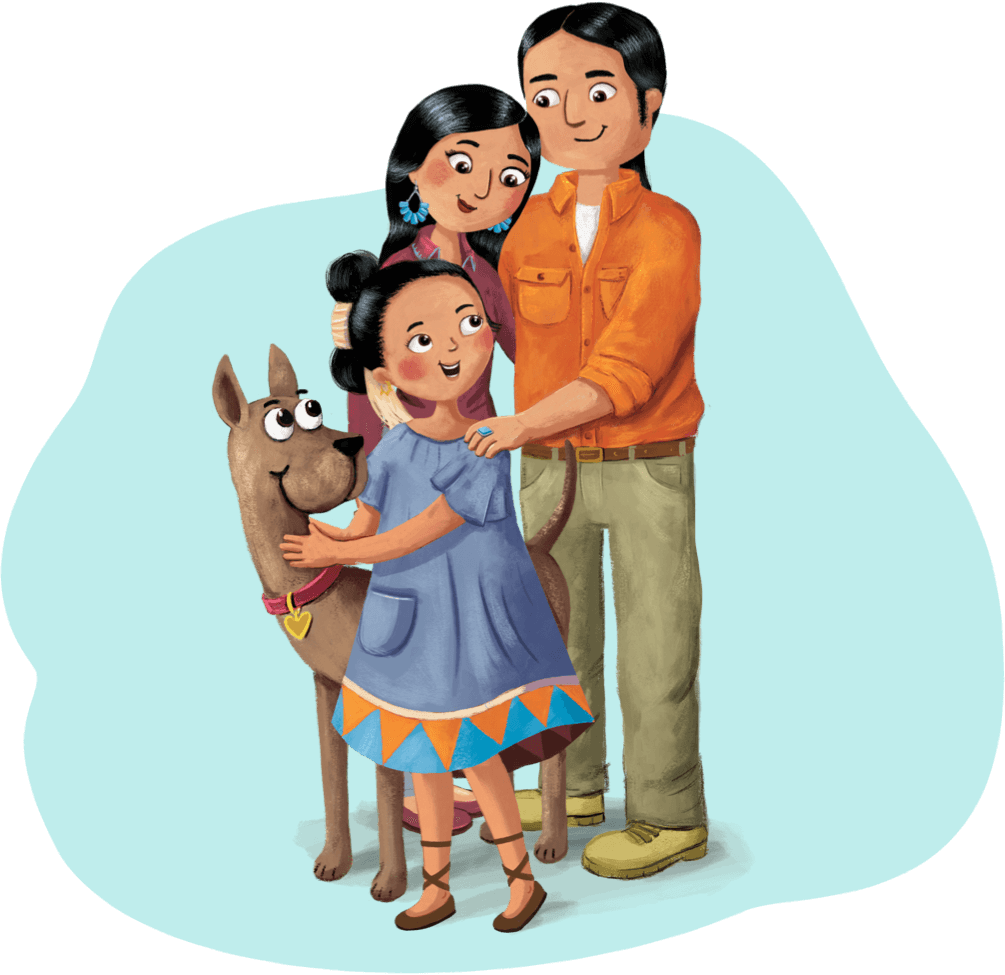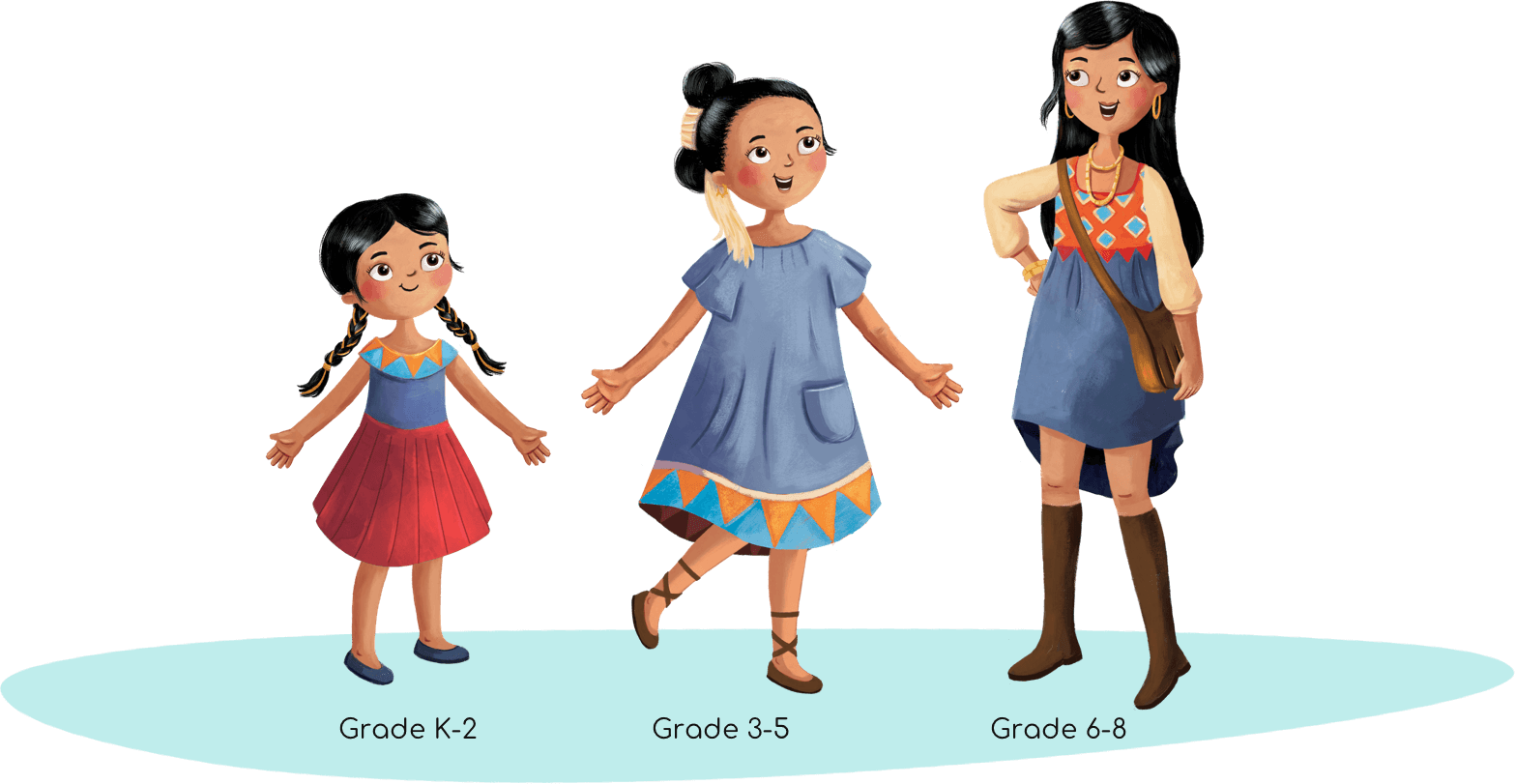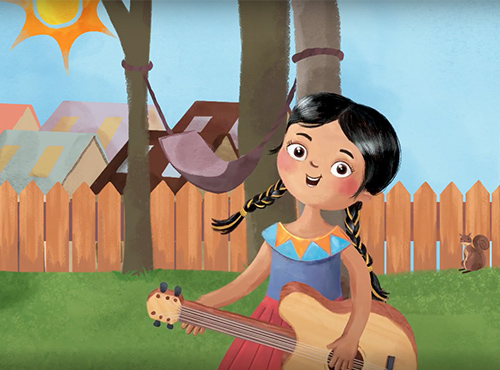DOBA NEZ
A Song of My Own
My parents sang traditional Navajo songs to me when I was a baby to help me sleep, and they say I’d hum along with them before I could even sit up. They said I sang before I spoke, and I believe them. Music is a part of me. It helps me communicate how I’m feeling and how I understand my place in the world. Singing and playing music keeps me connected with my friends and community, but most importantly it keeps me connected to my Navajo culture, language, and ancestors. My grandmother and my parents teach me songs that have been passed down for generations, and these songs remind me that our community and its amazing music have survived so much. Our music gives me strength and a sense of purpose.
This year, my friends and I performed at our town’s big block party, and I wrote my own song. I go on lots of hikes with my dad, and I was so struck by the music we heard outside—the water rushing over rocks, the call and response of the birds, and the crunching of leaves beneath our feet. I wanted to capture that in music, so I took an old Navajo love song with a rhythm that reminds me of crunching footsteps on leaves, and I made it my own. There are some words in the song that don’t translate to English, so I split the song into two parts: half of it is the original Diné lyrics, and the other half is in original English lyrics that I wrote. When I was writing it, I wasn’t concerned about people not understanding because I don’t think anyone needs to understand all of the words to get the message of the song. I hoped that by having Diné and English in one song, I could get people to lean in and listen differently. I was really excited to play it.
But as the performance got closer, I started second-guessing myself. My parents, grandparents, friends, and other relatives from the Navajo Nation were going to be there. What if they thought that I didn’t do our community’s music justice? The Navajo songs that I knew were passed down across generations, and suddenly the pressure to live up to that oral tradition felt heavy. Overwhelming even. This was my first time adding my own ideas to our traditions. I was using traditional Navajo rhythms and percussion, but I wrote and played the song on my guitar. I wanted to make my family proud, and I also wanted to make every member of the Navajo Nation proud. I hoped that I was honoring my culture while also making it my own. I hoped I wrote a song that my family would want to pass down to future generations just like the Navajo songs I know were passed down to me.
After I got off stage, my face was hot and my hands were still shaking when my grandmother pulled me in close.
“I’m so proud of you, Doba,” she said. “Your song was beautiful. You made us proud.”
Knowing that my grandmother was proud made me so happy. There is music everywhere, and it’s my job to share it in a way that is authentic and honors my traditions and culture whenever I can.
View Blog






